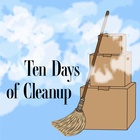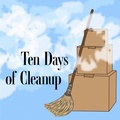“Do you think this Ryan Stone is a real person?” my daughter Sycamore asked me as we took a break from her Zoom class to make some no-knead bread. This was our fourth attempt at baking bread during the pandemic. So far our previous baking adventures were failures. I miscalculated the yeast for Indian naan and ended up with enough for a second plain loaf of bread. (I gave my naan a C+ and the bread a D.) Our milk bread rolls came out hard as rocks. My friend Kim guaranteed that I couldn’t go wrong with no-knead bread, so I was taking her word for it. The only thing was that we had to let it rise for 18 hours.
“Only a monkey could ruin it,” she said to me over the phone. I pictured myself as one of those snow monkeys in the coldest part of Japan. If I had to become a monkey, I’d be that one.
But back to Sycamore’s question—was my sole client, Ryan Stone, a real person? Of course he was because I had spoken to him and he had paid me through PayPal. But he was indeed mysterious.
Empty his very full storage unit in ten days. All of this seemed like some sort of test. But for what purpose?
I had to admit that I was pretty depressed before I received the call from Ryan Stone. I tried to hide it from Sycamore, but I’m sure that she picked up on it. Having this project, while challenging, invigorated me, connecting with strangers and their passions. While I didn’t have their same interests, their deep enthusiasm and fandom reminded me that life could be full of fun.
After we mixed the yeast with warm water and then added it to the flour, we placed the dough in an oiled bowl and covered it with saran wrap. I left the bowl near the kitchen window which received the most sun.
“Now what?” Sycamore asked.
I looked at the time on my phone. It was three in the afternoon, which meant our bread would be ready to be baked at eight the next morning.
“Time to go to the storage unit.”
We had cleared out more than half of the locker. The car grille had taken up a lot of space. It still smelled a bit like Charlie perfume from the broken bottle. But it was faint, not overwhelming, a reminder of our friendship with the L.A. Times perfume writer, Denise. Now we had to deal with five burlap bags. I was afraid to look at what would be inside. Sycamore ran and pulled open one of the bags.
She crinkled her nose. “It’s all baseball stuff.”
She emptied about seven bats on the ground. And then from another bag, seven gloves. And then a full catcher’s outfit, including the mask, chest protector, and knee pads. Two of them held a bunch of balls.
Sycamore wasn’t an athlete and neither was I, but I was once a spectator. Baseball was my father’s favorite sport. The Hanshin Tigers was our team, but our island was quite a distance from the stadium, so we always followed their games on our television set. One of my favorite memories with my father was sitting at our kotatsu, eating roasted chestnuts and smoked squid while watching the Hanshin Tigers play.
I examined the bats. They were all wood and signed with the name, Nancy Ito. The balls were signed, too, with the same name. “These aren’t for baseball. It’s softball. Women’s softball.”
Sycamore squatted down with me. “What’s the difference?”
I handed her a ball. “See how big this ball is?” Sycamore’s small hand could barely grasp hold of it.
She stared at the signature. “Who’s Nancy Ito?”
I got up and began loading the bags into the back of our pickup truck. “You’re going to find out for us,” I said.
While I drove to pick up some hot dogs at a local eatery in Pasadena (what can I say, our latest discovery got me in the mood), Sycamore was looking up Nancy Ito on her iPad.
“Here she is. She played for a team called the Santa Ana Lionettes. I’ve never heard of them before.”
I hadn’t either. In fact, I wasn’t aware of any women’s softball teams aside from ones connected to colleges or Olympic teams.
After we came home with our dinner and Nancy Ito memorabilia, I took a closer look at information about Nancy Ito. She had been a catcher. In fact, one of her teammates called her the best softball catcher she had ever seen. She had played for what I gathered were semi-pro teams from 1947 to 1974. Pretty incredible. I knew enough about baseball stats to be blown away by her softball numbers: she had a fielding percentage of .993 while she played for the Lionettes, making only 10 errors in 1,401 fielding chances in 222 games!
“She hardly made any mistakes in defensive plays. Do you know how hard that is?” I said.
Sycamore shrugged her shoulders and finished off her hot dog.
My daughter needed an education. After dinner, I put on A League of Their Own, which was playing on one of our streaming channels. “So see the tall sister.” I pointed at the actress Geena Davis. “That’s the catcher.”
“Nancy Ito must have been tall.”
“Well, at least tough.”
I had forgotten how good that the movie was—how it explored relationships between sisters, the importance of friendship and female ambition. A League of Their Own ended in Cooperstown’s Baseball Hall of Fame. I recalled reading that Ito, five years before her death, had been elected to the National Softball Hall of Fame—not as well known as Cooperstown, but an accomplishment nonetheless.
After Sycamore went to bed, I did more research into Japanese Americans and sports. I was able to find a Brian Niiya with Densho and e-mailed him. Just like with Naomi Hirahara, he responded immediately. Apparently he was on Hawai‘i time as he was living on O‘ahu during the pandemic.
In his e-mail, he mentioned that he had overseen a Japanese American sports exhibition called, More Than a Game. Nancy Ito had been part of that presentation. Since Nancy had played for an Orange County softball team, a retired historian with Orange County ties, Arthur Hansen, might be of assistance, according to Brian. Arthur was an expert on Japanese American history and had led the oral history program at Cal State Fullerton.
I felt self-conscious reaching out to these distinguished academics but time was ticking and I needed to get rid of this memorabilia, however precious it was. I didn’t want to throw this historic equipment into our Dumpster, but I also didn’t have room for these musty burlap bags in our house.
“There’s a person who may be able to do something with your artifacts,” Professor Hansen stated in his e-mail. He shared the contact information for Kurtis Nakagawa, a Japanese American who lived in Orange County. “He stays up late, so you can call him.”
I hesitated before punching in his number. It was already nine, but the retired professor had urged me to reach out. Taking a deep breath, I called the number.
“Oh, Art told me you’d be contacting me.” Kurtis was prepared for my call and I was relieved.
Kurtis knew a lot about baseball and liked to talk about it. He told me that he lived close to Cal State Fullerton, which had supported star players like Kurt Suzuki, who was also a catcher. He was somewhat familiar with women’s softball. “I know that they had to work fulltime jobs while playing. And no air flights—they had to drive to games, sometimes going straight to their day jobs after overnight games.”
“They really loved the game,” I said. My father would respect the dedication of these female softball players.
“Yup.”
Kurtis was interested in taking a look at my Nancy Ito collectibles.
“I don’t think that they are worth much money,” I warned him.
“It’s not about the money.”
“The thing is, I need it taken away now.”
“I’ll come first thing tomorrow morning.”
I wasn’t sure if Kurtis would indeed show up from Orange County the next day. I was preheating the oven for our no-knead bread when a text appeared on my cell phone around 7:30 AM.
I’m outside your house.
I couldn’t believe it. Sycamore, still in her pajamas, helped me move the five burlap bags to the front of our cottage. Kurtis, wearing a blue medical mask, kept his distance and waved.
“Thank you!” I said, careful not to yell loud enough to wake our neighbors.
He waved back and I was happy that Nancy Ito’s softball items would have a home or at least a guardian to care for them.
I washed my hands with soap and returned to the no-knead bread. The dough had risen beautifully, speckled with air holes as described by my friend Kim. I plopped it on a floured cutting board and folded the dough a couple of times before placing the round in a cast-iron casserole pan.
“I think this one is going to come out,” Sycamore said before logging into her Zoom class.
I felt the same way. I slid the pan onto the top rack and closed the oven door.
Notes: To find out more about ground-breaking Japanese American athletes like Nancy Ito, you can purchase More Than a Game: Sport in the Japanese American Community, edited by Brian Niiya.
For Jim Lahey’s No-Knead Bread recipe, go here: https://cooking.nytimes.com/recipes/11376-no-knead-bread
© 2021 Naomi Hirahara





